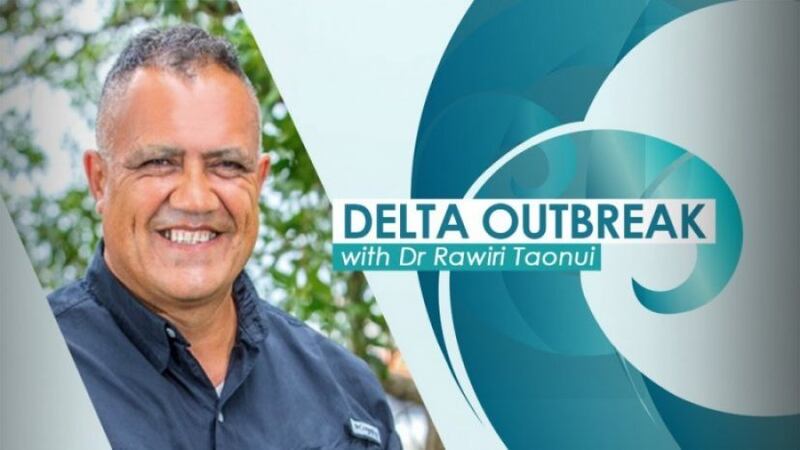By Māori health researcher Dr Rawiri Taonui, in partnership with Te Ao Māori News.
The 94 cases on Tuesday set a record in the current Delta OutBreak and for Covid-19 since the virus first reached Aotearoa in February last year. At 2,099 cases, Delta has by far and faster outstripped last year’s First Wave.
There were 39 Māori cases. This is the 16th day in a row where Māori have had the highest number of cases. Māori are 16.7% of the population. On 1 September Māori were 5.7% of cases. On Tuesday, Māori were 41.5% of all new cases, 44.3% of all cases during Level 3 in Auckland, 43.9% of cases in Managed Isolation and Quarantine, 28.5% of all cases during the outbreak, and 23.8% of those who have been hospitalised.
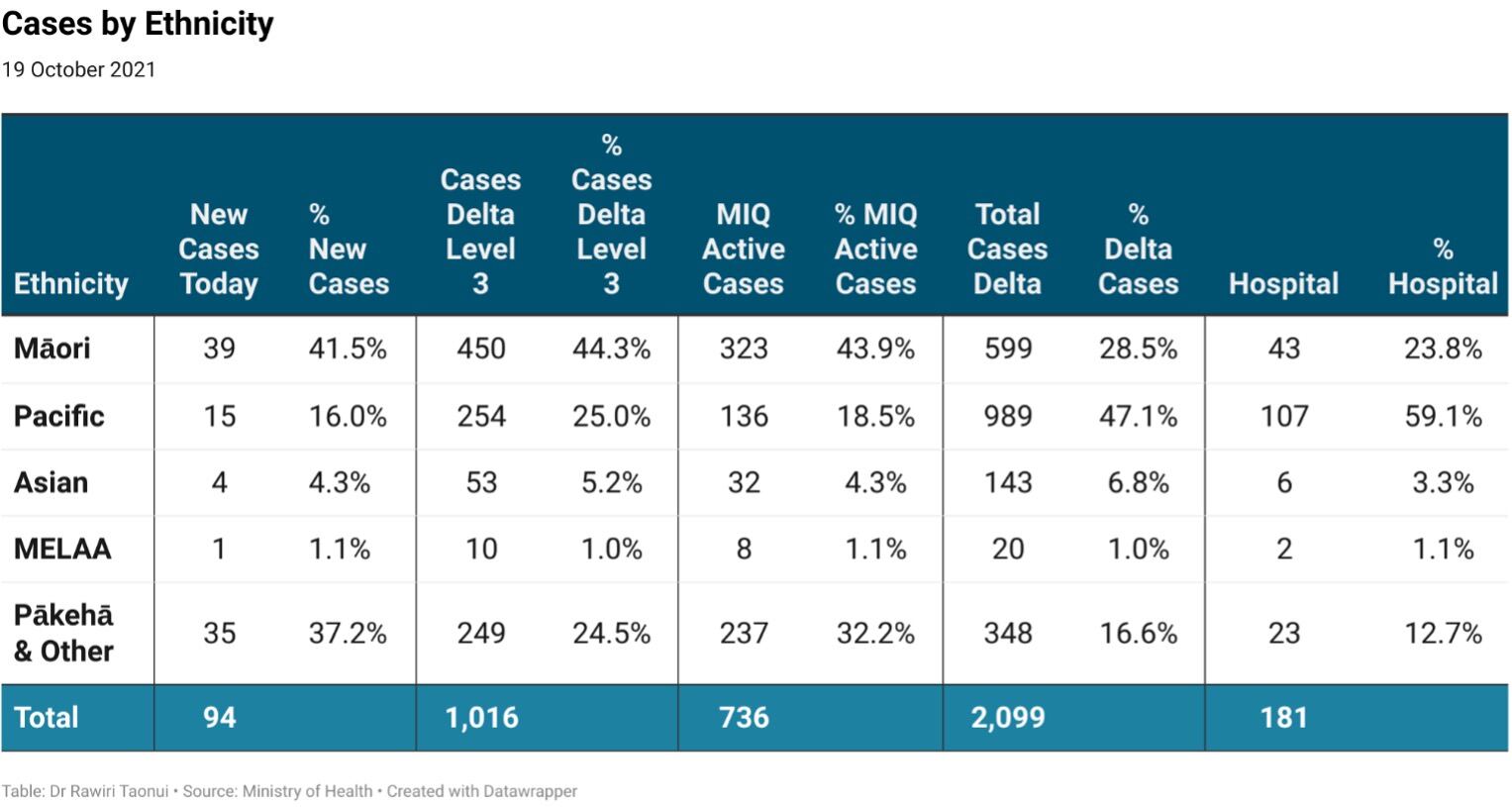
The Threat of Delta going Exponential
All the key indicators point to Delta going exponential in Auckland. Between Week 1 and Week 4 of Level 3, the average number of cases announced each day and the number of cases with community exposure rose four times higher. Hospitalisations and cases in ICU have doubled. The number of unlinked cases daily and over the previous fortnight are respectively 11 and 13 times higher.
The numbers tell us that contact tracing is over-stretched and that the Ministry of Health and the Auckland Public Health Service are fast losing track of chains of transmission.
The same figures from Tuesday reinforce the trajectory toward a runaway event. The number of cases is 50% higher than the weekly average, cases with community exposure 30% higher, unlinked cases up 80% and unlinked cases over the previous fortnight have jumped 50%.
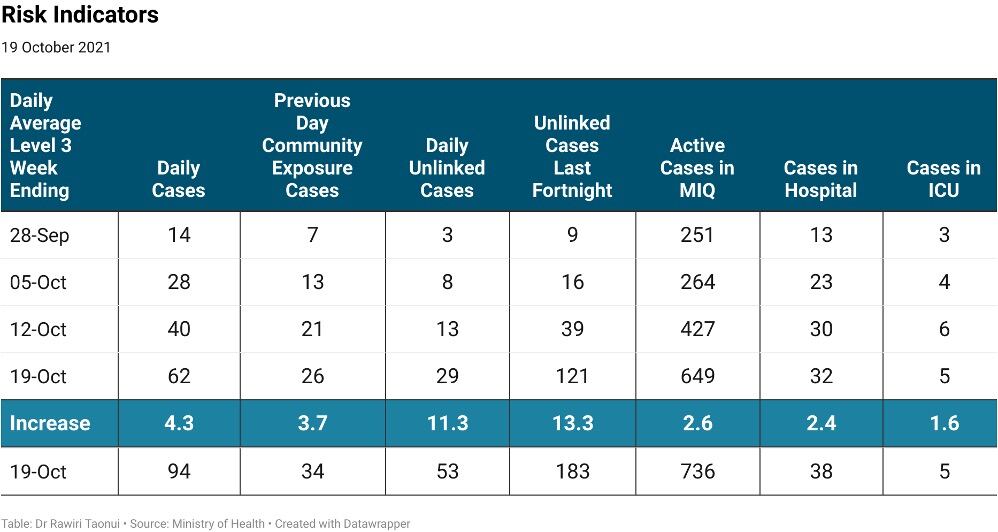
Māori to be hit Hardest
Last Wednesday 13 October, I published a column predicting between 700 and 1,100 new Delta cases in the Māori community by 2 November. Even without a further increase on Tuesday’s cases, there will be at least 600 new Māori cases. If Delta breaches 100 new cases and more than once over the next few days, then Auckland will be on its way to a runaway event. Māori cases could then reach between 2,000 to 5,000 and 100 to 200 deaths as the city becomes the Navajo Nation of the South Seas.
The following chart shows the rising number of Delta cases has surpassed the first part of the Delta wave. The chart also shows the rapidly rising proportion of Māori cases in the outbreak. This reinforces the risk that confronts Māori.
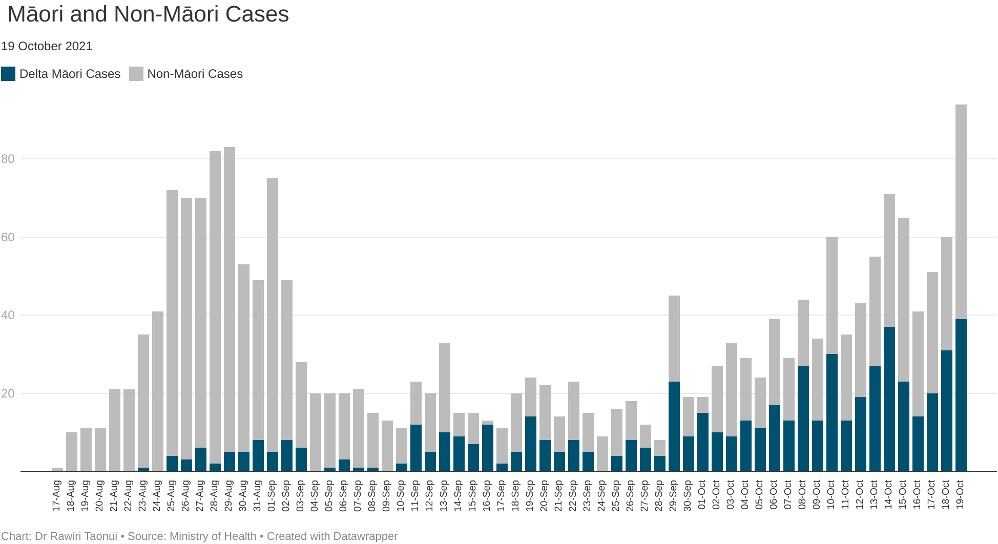
Māori Vaccination and Risk
Vaccination rates by District Health Board (DHB) (below) show Māori in Auckland are at high risk. According to the Ministry HSU index, and despite the magnificent work of the Super Saturday Vaxathon, 73% of Māori in Auckland are vaccinated but just 50% are fully vaccinated. If a runaway occurs, then Delta will have ready access to the vulnerable 27% unvaccinated, those ineligible for vaccination, and around 15% of those not fully vaccinated.
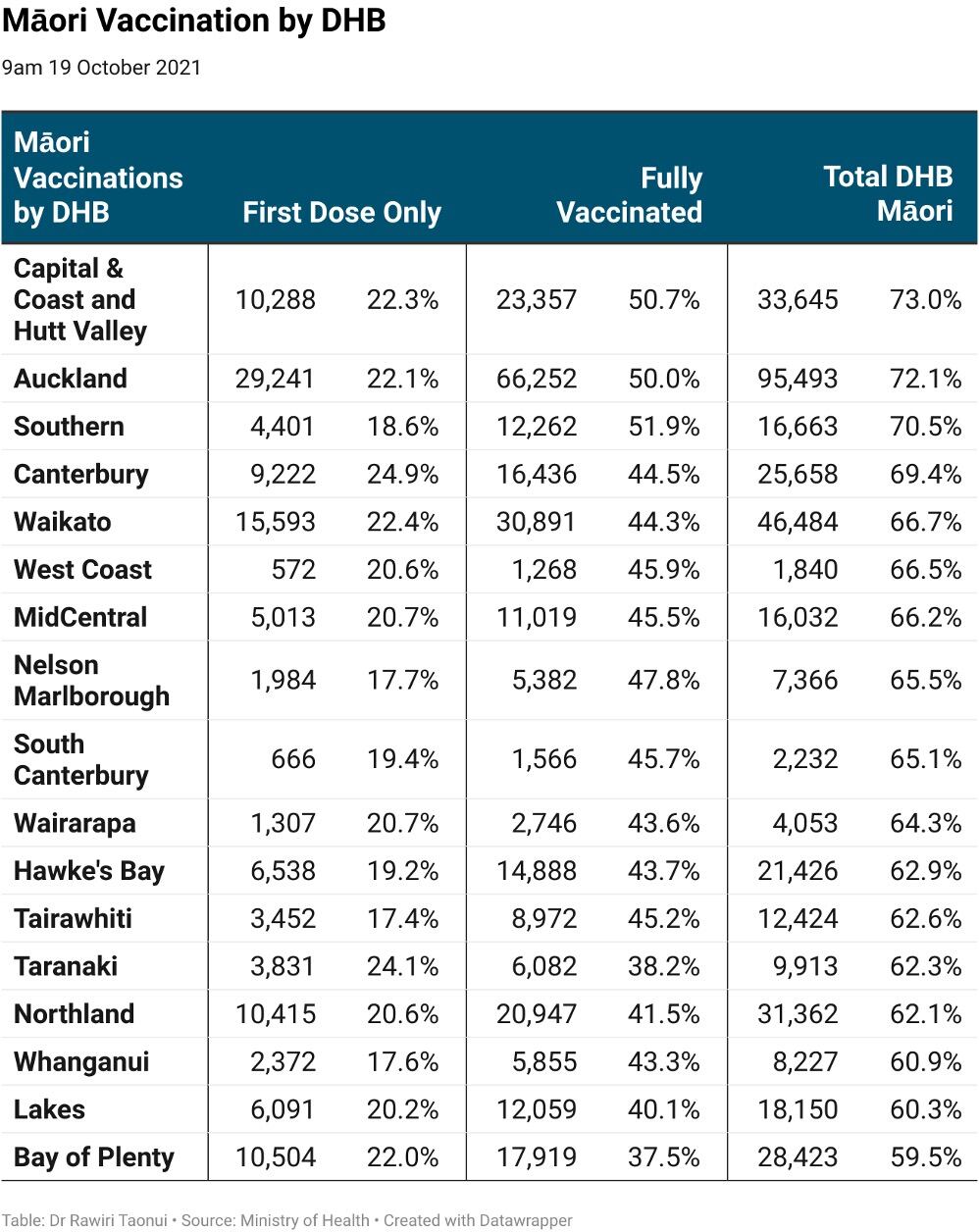
There is further risk to other Māori communities if Delta spreads from Auckland to Northland, and/or from Auckland and the Waikato to the Lakes District, Bay of Plenty, Taranaki, and Whanganui, DHB regions with the lowest vaccination rates.
Of greater concern, the HSU index undercounts the population by about 4%. This undercount varies by ethnicity with Māori having the largest undercount, by at least 7%. The Māori undercount is also greater in high Māori demographic DHBs like Northland, Auckland, the Lakes District, Bay of Plenty, and East Coast and among younger people in the particularly vulnerable 20–34-year-old low vaccinated Māori age group.
Opening Auckland
Had the government followed the expert advice on 20 September and kept Auckland Level 4 for another three to four weeks, we would have beaten the Delta OutBreak. Five weeks at Level 4 was never enough against a virus that was 2.5 times more transmissible and reached the same total as the First Wave we defeated last year in half the time.
The government decision on 1 October to begin opening Auckland via a contradictory three-step Level 3, that asked parents to stay in bubbles while their children mixed at schools, succumbed to political pressure from the National Party, Act, former Prime Minister John Key, and over-estimated non-compliance. The majority of New Zealanders want to do whatever is right to defeat Delta.
Strategies for Auckland
The government says that no one has beaten Delta. That is not true. Taiwan, alongside New Zealand, had the best record of any larger country against Covid-19 last year. Taiwan has applied fewer hard Level 4 lockdowns, their strength being remarkably high community compliance because of previous experience with the SARS (2003) and Swine Flu (2009-2010) pandemics.
In May, a large Alpha OutBreak caught Taiwan out with low vaccination rates. Cases accelerated to 14,000. It took Taiwan 10 to 12 weeks to suppress Alpha, and along the way, they also beat two Delta OutBreaks. Current daily cases average seven, New Zealand 60.
The government says that compliance falls off if Level 4 lockdowns remain in place too long. Perhaps. However, non-compliance is easier to spot and stop during Level 4 than it is at Level 3.
The government’s three-step Level 3 was premature. Europe, alongside the United States and the United Kingdom, are the leading promoters of the vaccination pathway to living with Covid-19.
They are also the best example of what happens if adopted too soon. On average, Europe has about the same level of full vaccination as New Zealand. On 13 September, the World Health Organisation reported 1.2 million new cases and 17,000 deaths in Europe. The highest vaccinated region in the world now leads the world in cases and deaths. About 70% of those infected and 90% of those who died were unvaccinated. This is what confronts Auckland.
Māori and their fellow citizens in Auckland are under huge pressure. Many do not want to return to Level 4. That is understandable. Whānau, aiga and families are suffering. However, by allowing more movement across the city, it is Level 3 that is driving and lengthening the outbreak.
Auckland does not stand alone, nor is it separable from the rest of the country. What happens in Auckland will unfold in Northland, the Waikato, the Bay of Plenty, the Taranaki and then the rest of the Te Ika a Maui, if not Aotearoa.
As Delta accelerates toward 3,000 cases, a Level 4 lockdown across much of the North Island will become the only option.
Noho haumaru, stay safe.
Dr Rawiri Taonui

